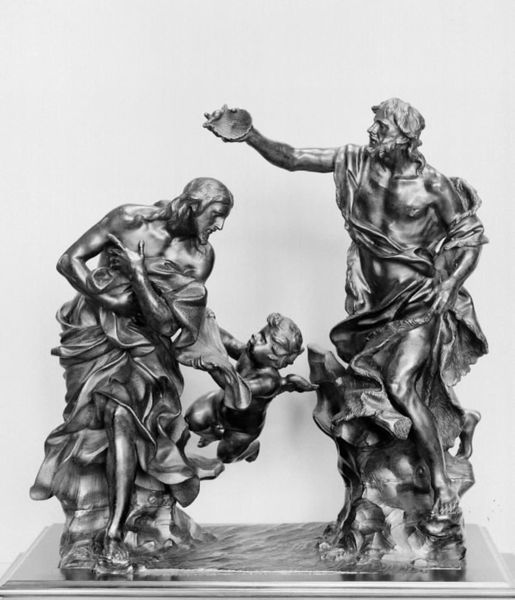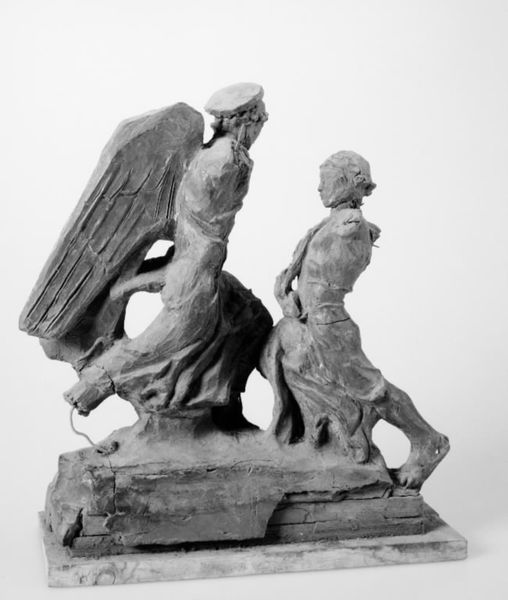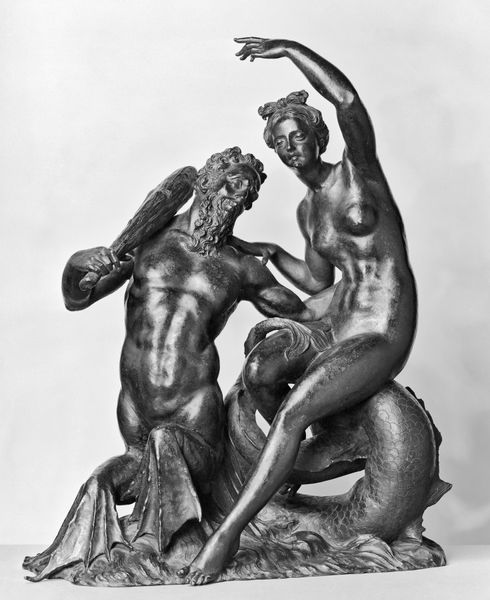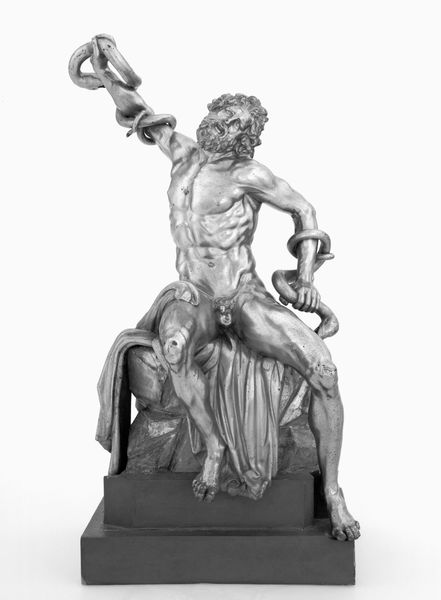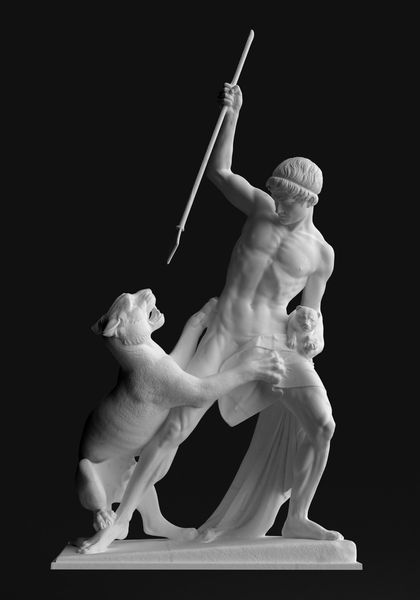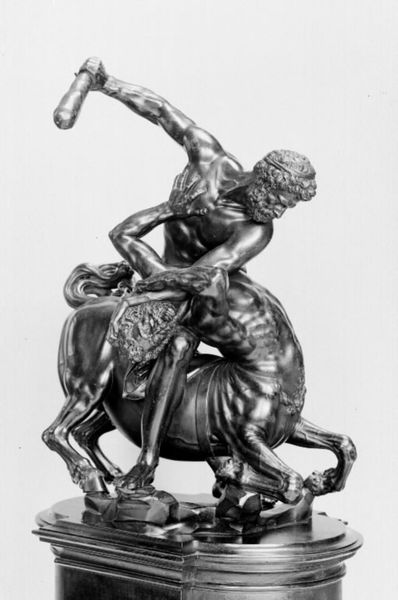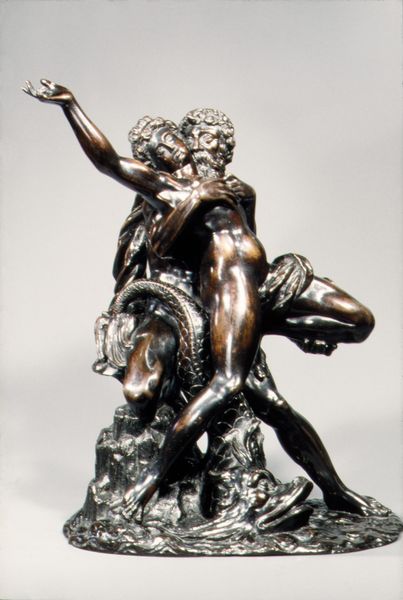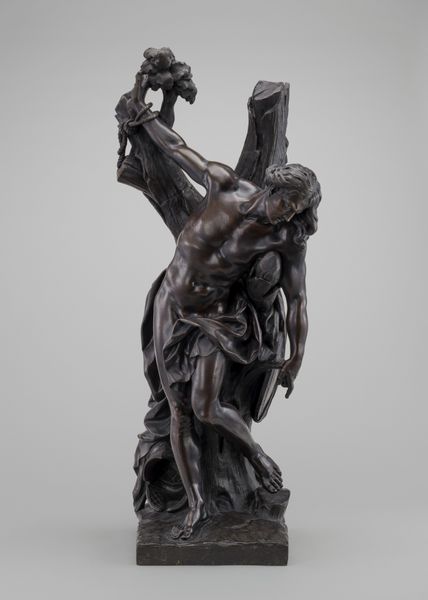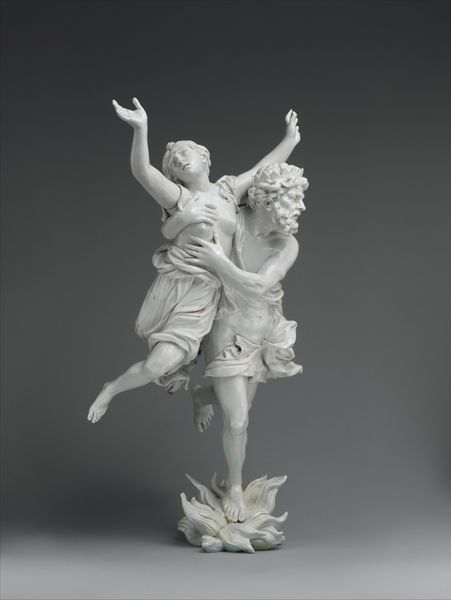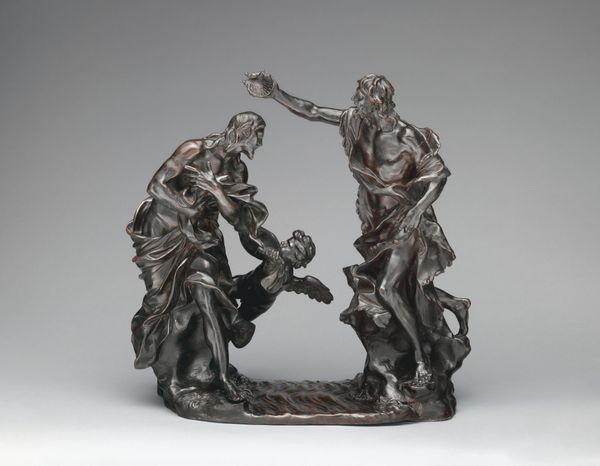
sculpture
#
baroque
#
sculpture
#
figuration
#
sculpture
#
history-painting
#
monochrome
Dimensions: 18.5 cm (height) x 15.4 cm (width) x 12.1 cm (depth) (Netto)
Editor: Here we have "Flagellation of Christ," a sculpture created sometime between 1663 and 1707 by Joachim Henne, housed at the SMK. The monochrome tones give it a striking, solemn feel. What social narratives are present here? Curator: This piece isn't simply about religious suffering. It forces us to confront power dynamics and violence. Consider the active figures versus the passive one, a literal enactment of dominance. How does seeing this scene, knowing its place in religious history, make you feel in today's social climate? Editor: Uneasy, definitely. The starkness makes it very raw, less about religious devotion, more about...torture and control. I guess the Baroque style intensifies the drama? Curator: Precisely! The Baroque aimed to evoke emotion, but we can dissect this further. Who commissioned this? What were their intentions in displaying such a brutal scene? Understanding the patron is key to understanding the artwork's intended function and the social values it upheld. Does that impact your interpretation? Editor: It does. It’s almost… propaganda. The glorification of power through religious iconography. Curator: Or perhaps a cautionary tale about the abuse of authority, framed within the Church's narrative. But who had access to such imagery, and whose voices are absent from this conversation the sculpture generates? Editor: So, not just what it shows, but who gets to see it and what that means in the grand scheme of things. I see that now. Curator: Exactly. The art object exists within—and comments upon—a larger framework of social power, both past and present. It’s a visceral demonstration that compels critical examination of oppressive dynamics, yes? Editor: Absolutely. Thanks for broadening my perspective. I came in thinking about religious art, but I am walking away contemplating the narratives of power.
Comments
No comments
Be the first to comment and join the conversation on the ultimate creative platform.
